Knowing through the committed body: following the flow of the river <
The watershed of the Aulne River covers 1890 km2. The route is done in segments
of 5-10 km, from the source to the estuary, like other routes taken on the
Gouët and the Trieux (See here,
english translation at the bottom of the page).
Filming requires walking (or navigating) several tens of meters upstream
from the camera so to not disturb it: this route can only be done from the
river itself.
I estimate the number of stages at around 70, including around forty in
2023.
Production
• Shooting for films and shared documentary base
• Hydrophonic sound recording
• Photographs and drawings of the emerged part
• Water samples
• Sound and visual mapping...
River route
The outings include two stages: On the way out, the river is covered, with
a camera on a float and underwater sound recording. On the return, it is
the emerged part which is walked, filmed and photographed.
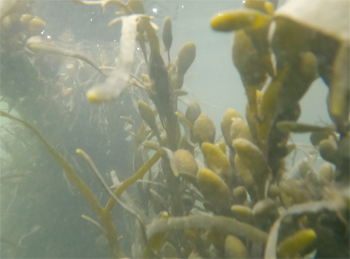 ...
...
 ...
...
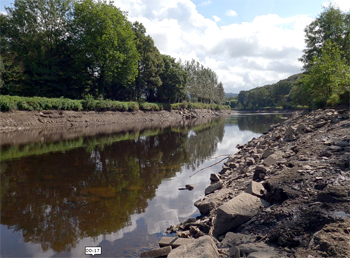 ...
...
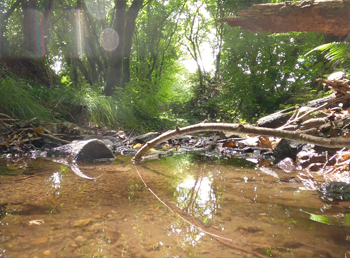 ...
...
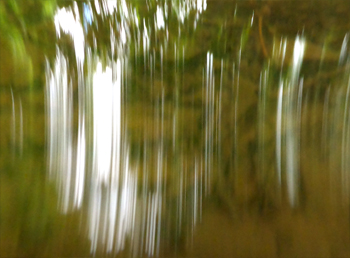 ...
...
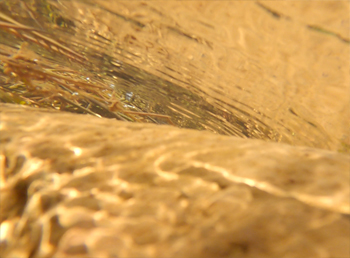 ...
...
Co-researches at the LEMAR with clam and water
<
SENSITIVE DIAGNOSIS:
Revealing the invisible, materialities
Research aiming to make visible what is microscopic, then linking it to
the macroscopic.
• Concentration of dangerous molecules (drugs, pesticides, etc.) to
the point of forming gelled efflorescences
• Impacts on shell formation
• Sclerochronology, time and space
• ...

Invisible materials: lead
Lead can be found both in estuary clams which ingest it in quantity, as
well as in water samples from the watershed. The lead taken was precipitated
into lead sulphide, causing efflorescence to appear.
Approximate size 2 X 2 X 0.7 cm.
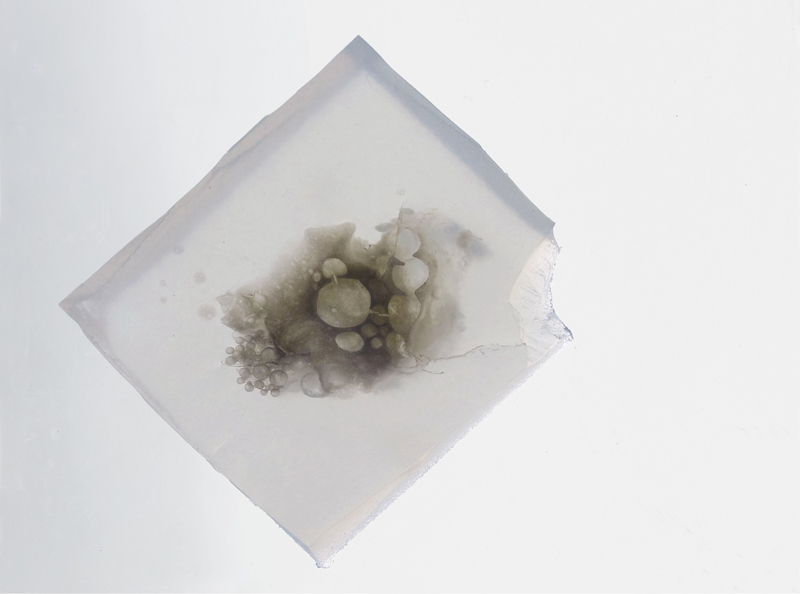
RESEARCH
Revealing links between sound and shape
Example: resonating water
Water carries sounds into the cell.
Sound modulated into coherent frequencies makes it possible to transmit
specific information: it is used in agriculture to fight parasites (proteodies).
Frequency therapies are also developing in medicine.
As a counterpoint to the underwater sound samples taken in the river and
the estuary, which will highlight omnipresent noise pollution, we will look
for coherent melodies that help the clam to cure from Vibrio.
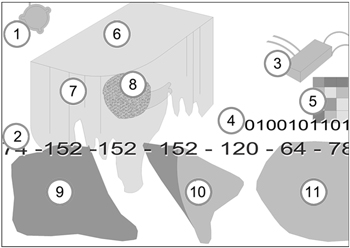
Resonating water: detailed process
1 Aquatic speaker broadcasting healing melodies
2 Melodic succession of sound frequencies
3 Amplifier
4 The signal is digital, so it can be transferred to another medium...
5 Like a smart card
6 The sound emitted by the speaker spreads throughout the volume of the
aquarium and makes the water vibrate
7 Water creates consistent ripples
8 The clam cells react to this structured water
Lower part of the image: confocal microscope views, courtesy Christine Paillard
9 The nacre of the shell is attacked by Vibrio tapetis. It forms
the brown ring visible to the eye; a chaotic structuration of the nacre
is visible under the microscope. The clam is sick
10 The sound influence helps the clam to fight against Vibrio, the shell
repairs itself
11 Cured Clam
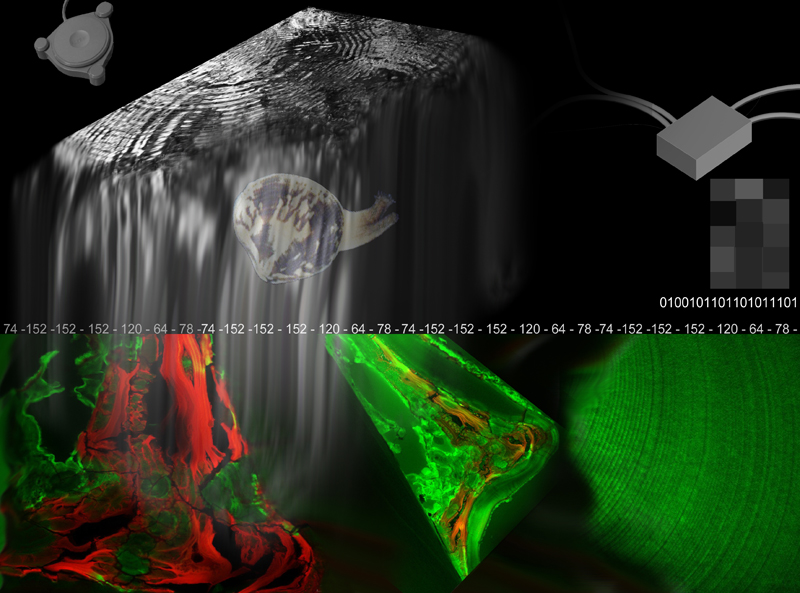
Experimental plateform OCEANOLAB <
Oceanolab is a permanent laboratory installed at the Oceanopolis marine
aquarium in Brest.
Initiated in 2019, Oceanolab is extended for coming years.
In a specific room of the Oceanopolis aquarium, clams will be monitored
individually by researchers from the CLIMCLAM team, and visible to visitors.
My current research and its finalizations may also be presented.
Trans-formative research <
From March 2024, participation in the "co-operative inquiry about Living
Waters" (Schumacher College, Dartlington) bringing together academics
(biologists, anthropologists, etc.) from Australia, Great Britain and the
United States around the relationship to water and all livings as it is
still understood and practiced by the First Nations. This collaborative
work will allow me to put in place tools to make the experience of “response-ability”
reproducible with living beings in general and the river in particular.
Extract from https://blogs.deakin.edu.au/becoming-family-with-place/
Extract from cooperative inquiry, Living Waters. "Tuning with Forest River place, looking through presences", Anne Le Mée